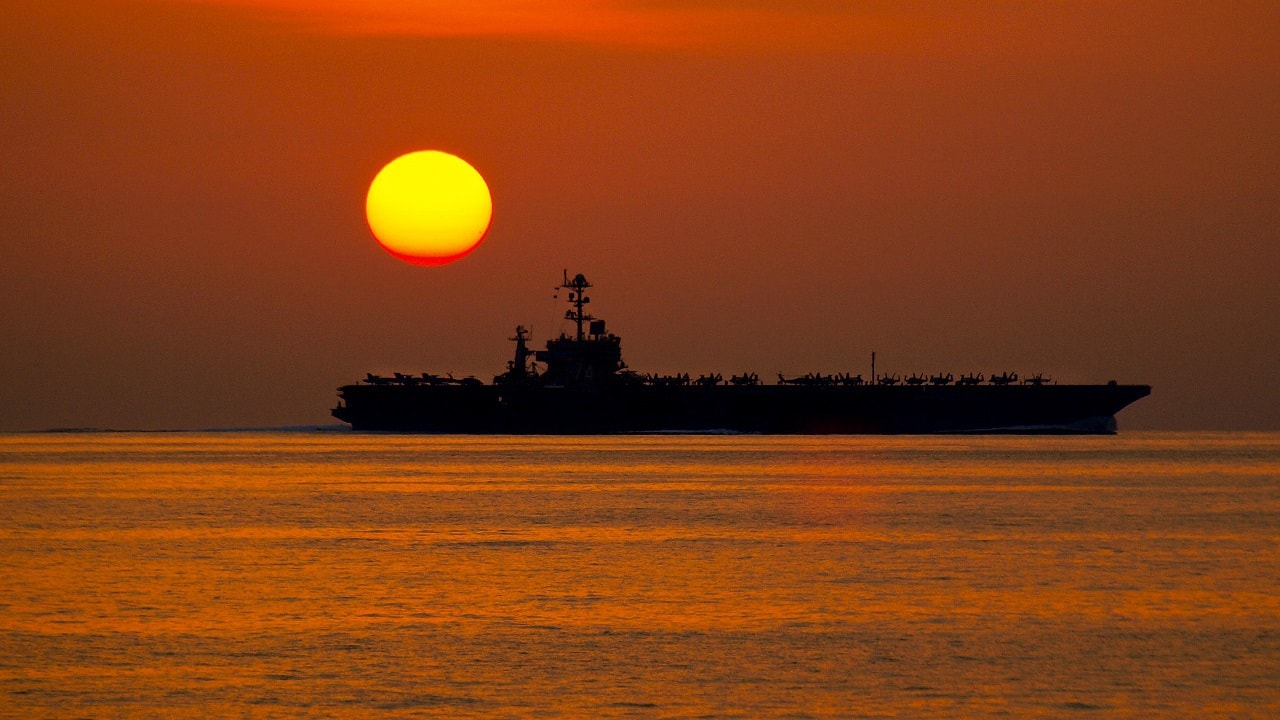For years the Pentagon, Congress, and even the President have discussed the issue of how many aircraft carriers the U.S. Navy needs. As this discussion persists, the Navy seeks to best meet demands and respond to threats in an increasingly dangerous and fast-changing threat environment.
Power Projection and Aircraft Carriers
Nothing in the world can project power like a U.S. Navy aircraft carrier as it possesses the power to launch massive offensive strikes from waters offshore, holding targets and enemies at risk. This well-known and often-proven reality explains why the mere forward presence of a carrier can have a “calming” type of deterrent effect.
At times the Navy and Pentagon leadership have called for 11 carriers, and have most of the time in recent years asked for 12. However, the U.S. Navy now only operates 10 or 11 aircraft carriers, so it makes sense that the Navy’s previously released “Chief of Naval Operations Navigation Plan 2022” would call for 12 aircraft carriers as the Navy moves into the future.
“Nuclear-powered aircraft carriers, which will remain the most survivable and versatile airfields in the world, provide long-range, persistent sea control, power projection, and organic sensing in contested seas, as well as flexible options across the spectrum of conflict,” the text of the plan states.
Why 12 Carriers?
There are many reasons why the service would cite 12 carriers as an objective, the first of which can simply be described as Combatant Commander demand. Fleet Commanders across the world, including in areas such as the Mediterranean, Pacific, Persian Gulf, and Baltic Sea regularly see the need for forward carrier presence, given the need to deter potential aggressors or even secure vital strategic international waterways. Certainly, the possibility of a two-front war in various parts of the world simultaneously would require a carrier presence and power projection.
The most significant factor, however, may well pertain to China. While China only operates two carriers at the moment, the pace at which it is adding new carriers and its ambition for continued naval expansion is likely noticed by the U.S. Navy. Clearly, the Peoples Liberation Army Navy (PLAN) wishes to expand its role beyond merely being a regional power to a situation wherein it is the dominant global power. The Chinese Navy is already larger than the U.S., in terms of sheer size, and new destroyers, amphibs, and submarines are being added at a staggering rate.
Finally, there is a reason the U.S. Navy regularly conducts “dual carrier” operations in the Pacific, as newer networking technologies enable great synergies between Carrier Air Wings and massively expand an ability to launch large-scale air attacks from the ocean. The scale could be crucial in any kind of major confrontation with China, given that large areas of land, coastal regions, and islands would need to be held at risk or attacked.
Kris Osborn is the Military Affairs Editor of 19FortyFive and President of Warrior Maven – Center for Military Modernization. Osborn previously served at the Pentagon as a Highly Qualified Expert with the Office of the Assistant Secretary of the Army—Acquisition, Logistics & Technology. Osborn has also worked as an anchor and on-air military specialist at national TV networks. He has appeared as a guest military expert on Fox News, MSNBC, The Military Channel, and The History Channel. He also has a Masters Degree in Comparative Literature from Columbia University.
From 19FortyFive
Total Massacre’: Ukraine Footage Shows Russian Cruise Missile Shipment Attacked
Video – Ukraine Has Massive New NATO ‘Cannon’ Ready To Fight Russia

